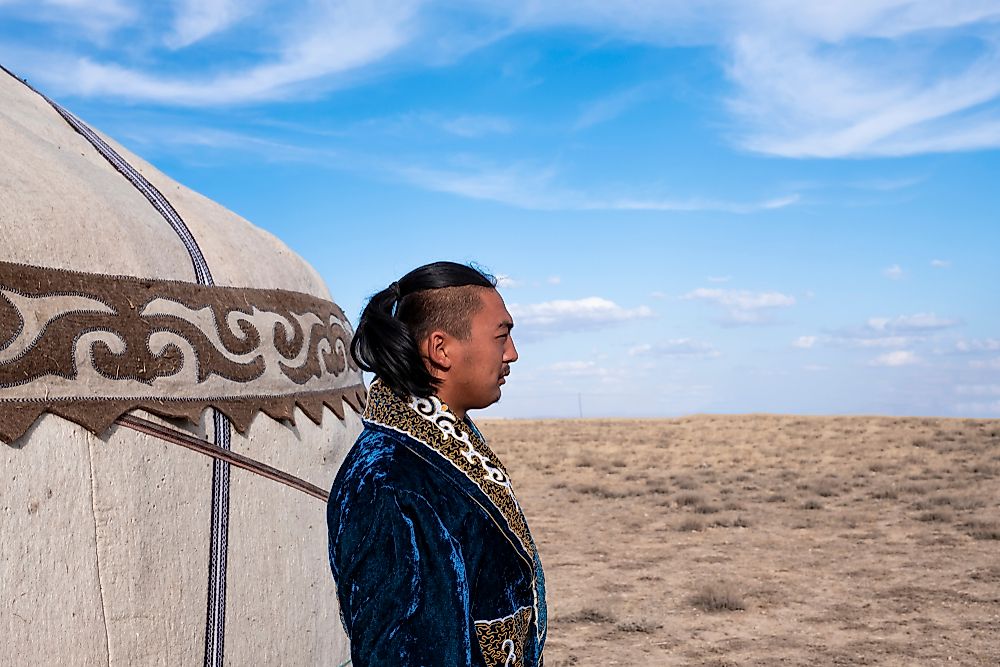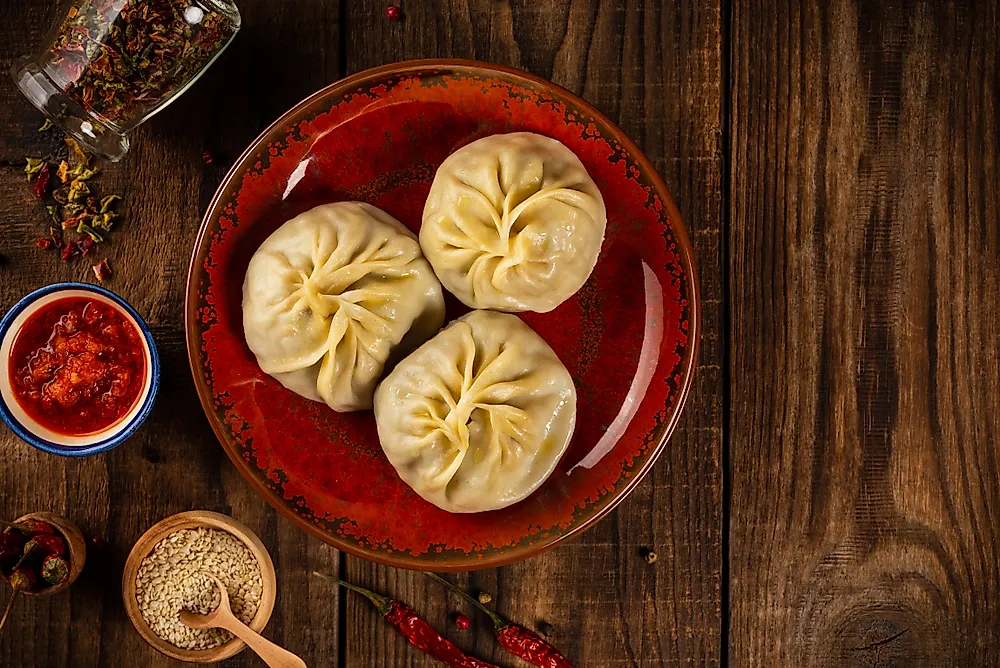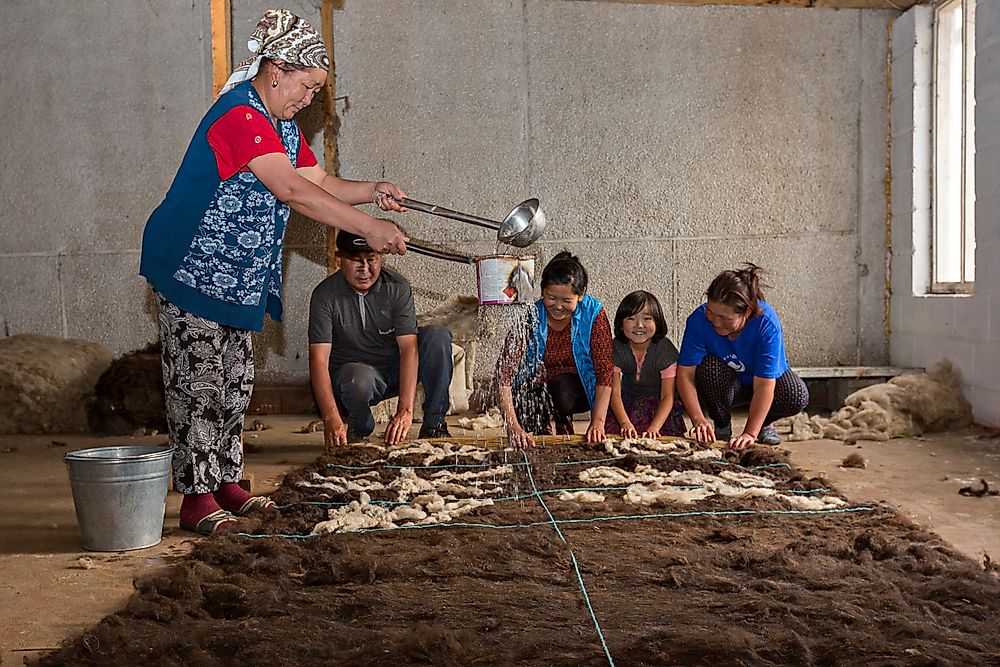The Culture Of Kyrgyzstan

The Central Asian nation of Kyrgyzstan is a landlocked mountainous country with a population of around 5 million. The ethnic Kyrgyz comprise 73.2% of the country’s population. Uzbeks and Russians are the largest minority ethnic groups accounting for around 14.6% and 5.8% of the total population, respectively. Islam is the religion of 75% of the population of Kyrgyzstan. 20% of the population adhere to Russian Orthodox Christianity. The remaining 5% practice other religions. Here is an important overview of some of the aspects of Kyrgyz culture.
Kyrgyz Cuisine

Kyrgyz cuisine exhibits great similarity to Kazakh cuisine. Mutton, horse meat, beef, and dairy products constitute the main part of the Kyrgyz diet. The former nomadic way of life of the people has heavily influenced the cuisine with cooking techniques focussing on the long-term preservation of the food items. International cuisines are served in many of the large cities of the nation. Beshbarmak is regarded as the national dish of the country. It is horse meat cooked in its own broth and served with noodles. Horse meat is also substituted by sheep meat on some occasions. Beshbarmak is an important dish during important celebrations like a birthday or a funeral. Paloo is another popular Kyrgyz dish. It consists of meat pieces fried in a cast-iron cauldron. It is served with cooked rice, fried garlic cloves, and red peppers. Manty (steamed meat-filled dumplings), Samsa (vegetables or meat wrapped in flaky pastry), Shorpo (a meat soup), Shashlik (a grilled mutton dish), etc., are some other traditional Kyrgyz dishes. The kymyz (an alcoholic drink prepared by fermenting the milk of a mare), maksym (a fizzy drink from fermented grains), etc., are some of the beverages consumed by the Kyrgyz people.
Kyrgyz Literature
Kyrgyz literature was mostly in the oral form until the 20th century. The oral literature was based on folk tales and epics about mythical warriors and creatures. Novel-writing developed only in the 20th century. Historical and romantic novels flourished during this time. One of the most renowned Kyrgyz writers was the novelist Chingiz Aitmatov who is remembered for his works on life in Soviet Central Asia.
Kyrgyz Art And Craft

Kyrgyz women produce textiles made of felt from the wool of local sheep. These handicrafts are very popular among tourists visiting the country and are also exported. Shyrdaks are hand-made felt carpets made in Kyrgyz homes. Tush kiyiz are beautiful, embroidered wall hangings prepared by the elderly women in the country. The Kalpaks is the national hat of the country. Kyrgyz embroidery is usually ornate and colorful and represents the emblems of the Kyrgyz culture, plants, animals, national designs, flowers, etc.
Performance Arts In Kyrgyzstan
The traditional music of the country is influenced by the nomadic and rural way of life of its people. Long, sustained pitches characterize the folk music of the country. Folk songs and dances are performed during the various cultural and religious festivals held in the country. The growing tourism sector has also helped boost the performance arts sector of Kyrgyzstan. Some of the traditional Kyrgyz musical instruments include the mouth harp called oz-komuz, the komuz (a 3-stringed lute), and a clay wind instrument called the chopo choor.
Life In A Kyrgyz Society
Historically, Kyrgyz women have enjoyed a respectable status in society. The Soviet rule in the nation maintained the equality of genders. Women do work outside of the home, mainly in the education and agricultural sectors. Men are, however, dominant in administration, politics, and business.
Arranged marriages were more common in the past in Kyrgyzstan. Currently, couples, especially those in cities, choose each other for marriage. People are expected to marry early and bear children at a young age. Brides are expected to give a dowry in the form of clothing, rugs, sleeping mats, etc. The groom pays a bride price in exchange for the bride to the bride’s family. It is usually in the form of cash or livestock. Kyrgyz weddings are elaborate, typically lasting for three days.
Brides usually move into the groom’s house where the couple continues to stay if the groom is the youngest son. If not, they move out as soon as they have a home. The youngest son inherits the parental house and is also assigned the duty of caring for the parents.
A shocking marriage tradition that is prevalent in Kyrgyzstan is that of bride stealing. A man might kidnap a woman and take her to his home to make her his wife. The bride has the right to sue her kidnapper but it is unlikely that any other man would be willing to marry her. Often, such marriages have ended in disastrous consequences.
Kyrgyz households are fairly large consisting of grandparents, parents, and children. Generally, families have three or more children. Mothers or other female family members usually care for the infants. A newborn is not exposed to the outside world for the first forty days of her or his life. Education is provided to both daughters and sons.
Respect for the elders is the most important aspect of etiquette in the country. Politeness is expected while speaking to elders. Respect is also exhibited in other forms like, for example, elders are offered seats in buses and trains while traveling. Greetings are made by shaking hands or kissing on the cheeks. The greeting style, however, varies in different parts of the country and between genders. The Islamic greeting by saying Assalom aleikum is often used while meeting people. Bread is regarded as sacred and is never wasted. Leftover bread is given to the animals. Prayers are usually said at the end of a meal.











